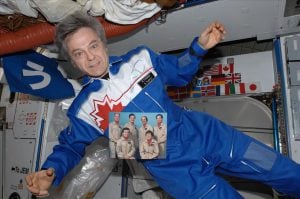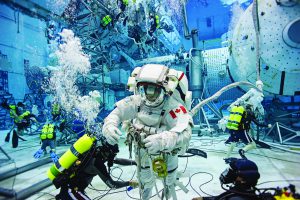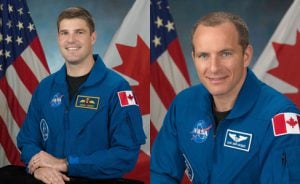
Exploration
Canadian Space Agency astronaut profiles
The men and women that have become part of Canada’s space team
- 1067 words
- 5 minutes
People & Culture
The trailblazing scientist who advanced our understanding of the impacts of spaceflight on the human body died on March 6, 2023 at the age of 88

A father, husband, astronaut, scientist, and inventor, Kenneth Money made it his life-long mission to understand and alleviate the effects of space flight on the human body.
Through countless contributions to space exploration — including his invention of an experimental surgical procedure to treat dizziness, over 100 published articles and involvement in Canada’s first medical experiments performed in space — he cultivated a deeper understanding of the human body both on and off the Earth. Within his work, he investigated the intricacies of motion sickness, pilot disorientation, the inner ear and the effects of alcohol in space.

“He wanted to contribute to knowledge,” said Laura Money, the astronaut’s only child. “He was a big believer in knowledge and that it would help humans live better lives and survive.”
With degrees in chemistry and physiology, Money began his career in 1961 with the Defence and Civil Institute of Environmental Medicine (DCIEM). His advanced knowledge of spatial disorientation and motion sickness caught the attention of NASA, which he joined a year later as a scientific advisor and co-investigator on various experiments on six separate space missions.
In the ‘80s, Money became a member of Canada’s original astronaut corps, which later merged with the Canadian Space Agency (CSA). There, he would become an integral member of the team that sent the first Canadian astronaut, Marc Garneau, into orbit.
During his time with the CSA, Money served as the designated alternate payload specialist for the first International Microgravity Laboratory mission, Space Shuttle Discovery flight STS-42, which launched in 1992 with Canadian astronaut Roberta Bondar aboard. From the ground, he organized communications between the flight crew and the ground support team within NASA’s Marshall Space Flight Center in Alabama.
The crew of STS-42, considered a life sciences mission, conducted experiments to determine the effects microgravity had on living organisms like shrimp, fruit fly eggs and bacteria. They also analyzed the effects that a weightless environment had on humans, including the changes in eye motion, inner ear function, the balance and nervous systems and spine elongation.
Aside from his astronautical experience, Money was also a Royal Canadian Air Force fighter pilot who flew a variety of aircrafts, including helicopters. He was also an accomplished athlete, placing fifth in the men’s high-jump in the 1956 Summer Olympics.
“He was driven to succeed or compete or win in everything he did,” said Laura. “He worked hard, but he thought first and came up with genius ideas and applied that to everything.”
Among multiple accolades, Money was awarded the Meritorious Service Cross by the Governor General in 1994 for his immense impact within the science and technology communities. Six years later, he was awarded the Kent Gillingham Award by the U.S. Aerospace Medical Association, specifically for his work to expand understanding of space sickness.
Laura said her father donated his body to the University of Toronto to further medical research, saying that he wanted to contribute to the world even after leaving it.
Are you passionate about Canadian geography?
You can support Canadian Geographic in 3 ways:

Exploration
The men and women that have become part of Canada’s space team

Exploration
The significant CSA events since Alouette’s launch

Science & Tech
From enduring extreme isolation and psychological strain to operating high-tech robotics and undergoing an intense physical fitness regimen, here’s a glimpse at what it takes to head to space

People & Culture
This year’s roster of Gold Medal recipients at The Royal…